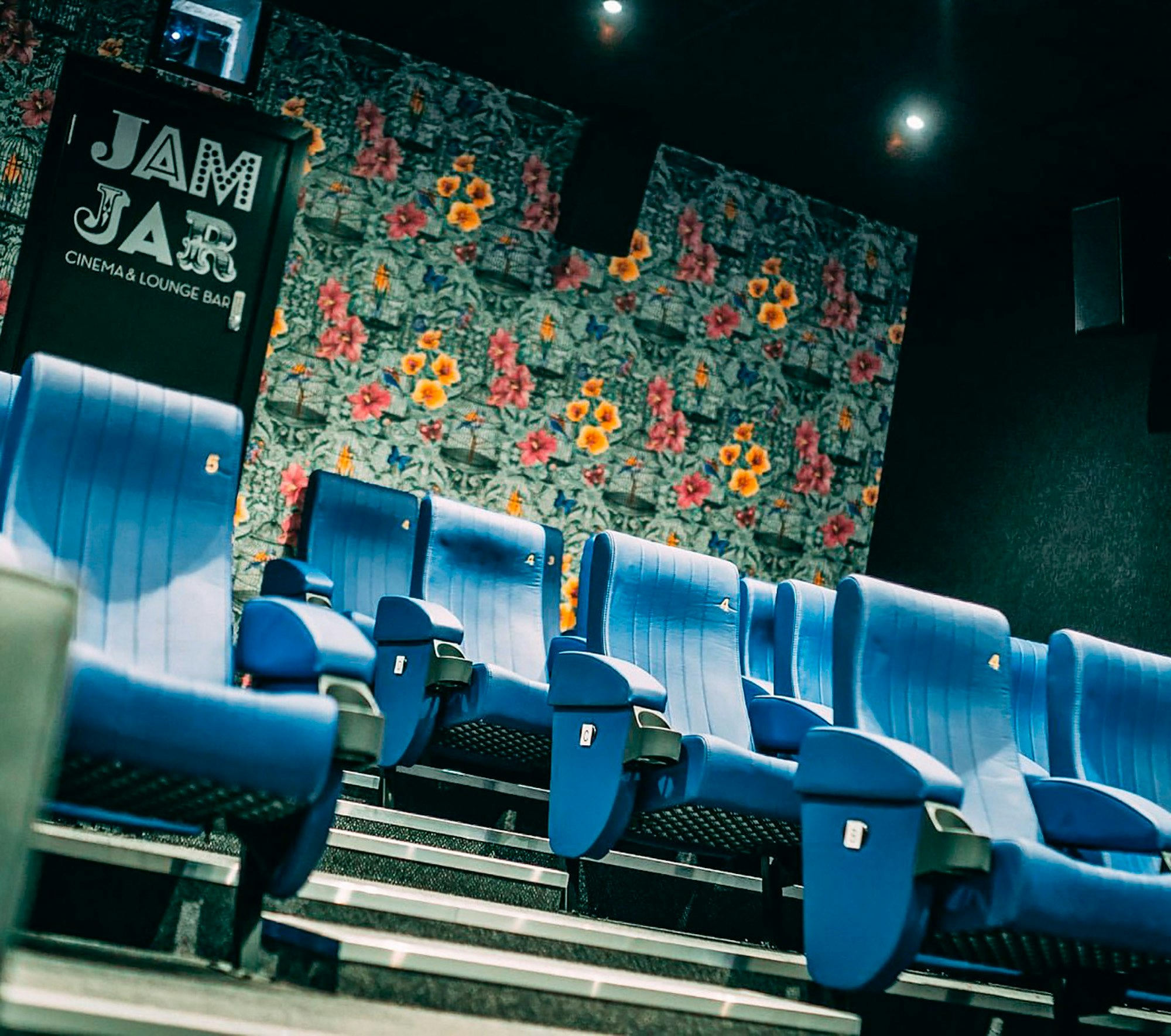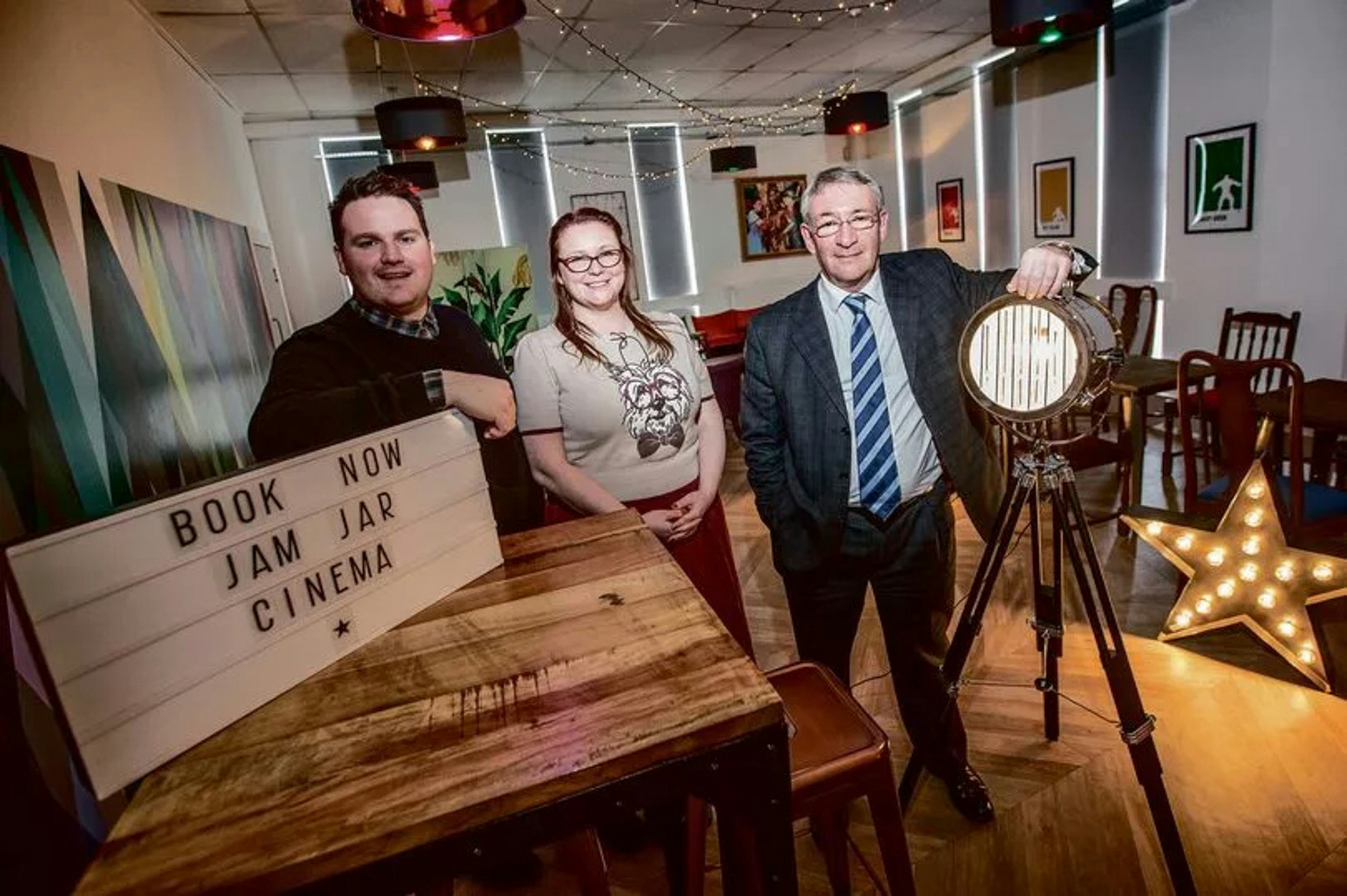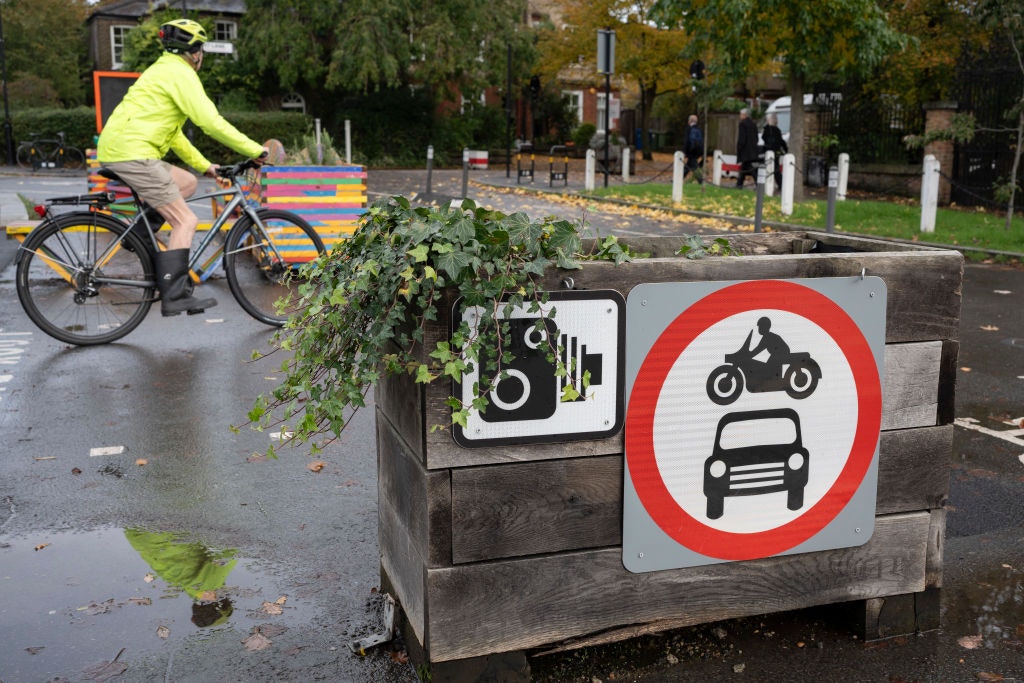The cinematic future is bright
“The End” is in sight for communal film-watching, right? Wrong
This article is taken from the August-September 2024 issue of The Critic. To get the full magazine why not subscribe? Right now we’re offering five issues for just £10.
For Hugh Grant, it was another example of how the internet is destroying all we hold dear. “Fulham Road cinema closing after 94 years,” he wrote on Twitter. “Strangely unbearable. Let’s all sit at home and watch «content» on «streaming». Whilst scrolling.”
The closure of a beloved picture house, one whose façade and foyer evoked the golden era of Humphrey Bogart and Ingrid Bergman, is indeed a sad moment. But what if Grant is wrong? Although this decade has been a horrible one for the movie industry, and although some cinemas are closing, the surprising reality is that there were more cinemas open in 2023 than five years earlier. Indeed, you can make a case that, given how badly the industry was ravaged by pandemic and strikes, what’s amazing is how well things are going.
Grant’s belief that streaming is killing cinema-going is hardly a new one. After all, why pay £10 a ticket to go out to the cinema when you can watch a film in ultra-high definition in the comfort of your own home? That’s why people are often surprised to learn that in 2018, British cinemas sold more tickets than in any year since 1970.
“The demise of our industry has been predicted since the beginning of sound and movies,” says Tim Richards, founder of cinema chain Vue International, a man who is an optimist about his industry. “We were not going to survive VHS. And then when the quality improved with DVD and Blu-ray that was definitely it. And then finally, when subscription services happened, nobody was ever going to go out again.”
But between 2000 and 2020, ticket sales were higher in every year than they had been since 1973. And they seemed set to keep going up — until Covid struck.
Let’s go back a little way. In 1987, my friend Paul brought a leaflet into school in a state of high excitement. A new cinema was opening in High Wycombe, and it was going to have six screens! It would have a pizza parlour built in! And a sweet shop! And a videogame arcade!

The Wycombe Six was, as a doubtful BBC reporter put it, “a temple to the modern American movie house”. It was a long, low building, out of town, with a huge car park. It was clean and bright. It sold fizzy drinks and boxes of popcorn the size of our heads. Each screen was vast, with hundreds of seats offering what was described as “Year 2000 comfort”.
The opening film was Top Gun, a statement of intent: this was going to be the place we went for our blockbuster entertainment. And it was. We had birthday outings there, of films followed by deep pan pizzas. We lied about our age to sneak into A Fish Called Wanda. We marked the end of our exams by walking over to watch Indiana Jones and the Last Crusade.
Movie-going had been in decline in the UK for decades, from a high of 1.6 billion admissions in 1946 to just 54 million in 1984. It wasn’t that the films were bad. But once-beautiful movie palaces had become fleapits offering little choice. The multiplexes changed that: by 1990 ticket sales were back up to 97 million a year. They would hit 142 million in 2000 and 169 million in 2010.
By then I was married and had just moved from Greenwich, on the edge of inner London to Orpington, on the edge of outer London. I asked a new neighbour which was the best local cinema. There’s nothing very close, they replied, but there’s a nice one in Greenwich. I resigned myself to suburban living: going to see a film meant an hour in the car.
Not, of course, that with small children I was going to make the journey. I had a big TV and a DVD player. Suburbia didn’t have independent video stores, but there was a Blockbuster, replaced in time with a LoveFilm subscription — what could be more convenient than discs delivered by post?
As it turned out, something could. By 2014, I was streaming films to a high-definition flat-screen TV with surround sound. Why would anyone ever go out again? Cinema ticket sales that year fell to 158 million. Blockbuster had just gone out of business, the latest victim of the internet revolution. How could cinemas avoid following?
I would get a glimpse of the answer two years later, when a new cinema opened in Orpington, the first since 1982. Unlike the Wycombe Six, the new Odeon wasn’t an out-of-town development. It was just off the high street, on the top floor of a new building where there had previously been offices. It had seven screens, but was just over half the capacity of the Wycombe multiplex. And it had another crucial difference.
At the start of the decade, British cinemas had quietly modernised. Out went traditional film projectors, and in came digital replacements. Where once distributors had to ship heavy reels of film to each cinema that wanted to show their movie, now they sent computer files. The difference for audiences was in higher quality picture: no more scratched or jumping frames. But behind the scenes, digitisation had transformed the business.

The seven projectors at the Orpington Odeon can be controlled by a single computer, and there isn’t much controlling to do: they’re just playing out digital files. They don’t need a skilled projectionist. In fact, you don’t need many staff at all, except to sell popcorn. At quiet times the cinema can run with three people. That means it can stay open longer, offering morning screenings, often popular with pensioners and parents of babies.
With physical film, the cinema business model was to offer a small number of screenings each day to large audiences: the Wycombe Six’s largest screens could fit in 350 people. Digital film upends that: the same file can be played across multiple screens simultaneously, so it’s possible to offer flexibility for smaller audiences.
On a Saturday morning at the start of the school holidays, the cinema will be showing the summer’s two big cartoons on six screens, staggering the starts at half-hour intervals. Want to see the new Despicable Me? Pick from one of 16 screenings, starting between 9 am and 8.30 pm.
Where the 1980s multiplex cinema was a sprawling out-of-town behemoth, its 2020s competitor is squeezed between offices on the high street, convenient for public transport and a drink before or afterward. The nine-screen Vue that has opened down the road in Bromley is even smaller than the Odeon, with screens with as few as 30 seats.
It’s not just blockbusters these cinemas show. Not having to find space to store physical films, or pay to keep them, they can have films they show once a week or less. “There is no such thing as an arthouse cinema anymore,” says Vue’s Richards. “There are small operators and there are larger operators. And we play more arthouse and foreign language films than what most people would have considered to be an arthouse cinema.” He says nearly half the films Vue shows are foreign language, sometimes targeted at particular communities, sometimes because there’s an audience for them.

At the opposite end of the scale is the Jam Jar Cinema in Whitley Bay, which spreads just 110 seats across three screens. It was set up in 2013 by Dan Ellis, then a recent graduate from the town who was frustrated that there was nowhere to watch films. At first he used a DVD player and a home projector, and then in 2015 he took out a car loan and used it to buy a professional projector.
“Digitisation created a level playing field for independent cinemas,” says 34-year-old Dan. “When Casino Royale came out in 2006, I watched it four weeks after it came out because that was the first time my local cinema could get a print.” Now he can download a film at the same time as the out-of-town multiplex in North Shields.
More than that, thanks to digitisation, he can bring the London West End to Whitley Bay, with live or as-live screenings of stage productions. “The National Theatre, ballet, musicals recorded on stage, they all do very well,” Ellis says. Compared to a theatre ticket, a cinema ticket is a bargain.
Jam Jar is run as a Community Interest Company, offering people three levels of ticket price depending on what they can afford, and a bar where local groups can meet. I met Ellis at the UK Cinema Association conference in 2020, where he was the poster boy for independent cinemas with creative approaches.
Then the pandemic struck. “We closed every cinema in nine countries in the space of three weeks,” recalls Vue’s Richards. “It was a very, very difficult time.” Even when cinemas reopened, there were few movies to put into them, because filming had been disrupted. As that was coming back, there were last year’s strikes in Hollywood. “It was just suicide for an entire ecosystem,” says Richards. It is a shortage of films, far more than competition from streamers, that is making life difficult for cinemas now.
With government help, Jam Jar survived, and it is now expanding to the nearby town of Blyth. Ellis says that, like other operators, he’s found cinema is a counter-cyclical industry: when money is tight, a film is a cheap night out.
But that’s not the only reason that cinemas have survived, or that Richards believes they’ll continue to thrive: “We are social beings,” he says. “We like to enjoy things together socially, eating a meal out, listening to music together, or watching a movie together. And movies watched collectively, well, they’re scarier, they’re funnier, and they’re sadder.”
Enjoying The Critic online? It's even better in print
Try five issues of Britain’s most civilised magazine for £10
Subscribe














